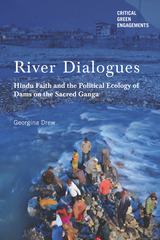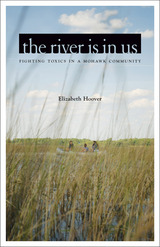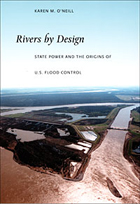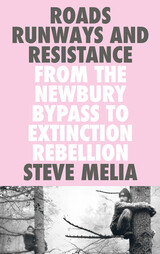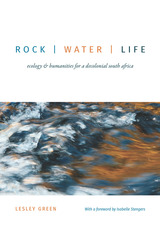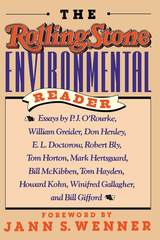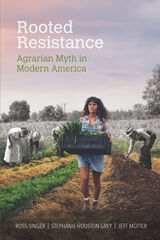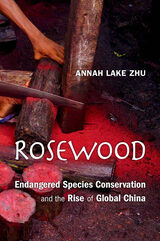Complete Writings and Selected Correspondence of John Dickinson: Volume 4, 1767-1769
by John Dickinson
edited by Jane E. Calvert
edited by Jane E. Calvert
University of Delaware Press
Cloth: 978-1-64453-403-8 | eISBN: 978-1-64453-404-5 (all)
See other books on: Calvert, Jane E. | Complete Writings | Political Freedom | Quaker | Volume 4
See other titles from University of Delaware Press
Cloth: 978-1-64453-403-8 | eISBN: 978-1-64453-404-5 (all)
ABOUT THIS BOOK | AUTHOR BIOGRAPHY | TOC
ABOUT THIS BOOK
In 1767, John Dickinson began publishing his twelve Letters from a Farmer in Pennsylvania, which earned him international celebrity as the leader of the American resistance to Britain. They educated Americans about their rights and how to defend them without violence. Importantly, they also taught the colonists to unite and understand themselves first and foremost as Americans rather than as Britons. He followed with letters on religious liberty in the Episcopal controversy and America’s first patriotic song, the “Liberty Song.” This volume documents the overwhelming public response around the Atlantic World to his writings. It was largely positive, with readers paying tribute to him in numerous ways, beginning with the Massachusetts circular letter to the other colonies advocating a nonimportation agreement. Most of the negative responses came from Dickinson’s enemy from the 1764 royal government controversy in Pennsylvania, Joseph Galloway, who orchestrated a smear campaign against “the Farmer.” Dickinson’s legal notes from this period include several interesting cases, such as his defense of a mixed-race servant woman charged with infanticide. Although there is limited extant correspondence, it includes letters concerning his courtship of his future wife, Mary Norris.
AUTHOR BIOGRAPHY
JANE E. CALVERT is a historian of early American intellectual history and the foremost expert on John Dickinson. She founded the John Dickinson Writings Project (JDP) in 2010 after publication of Quaker Constitutionalism and the Political Thought of John Dickinson (2009). Most recently, she published Penman of the Founding: A Biography of John Dickinson (2024), made possible by the work of the JDP.
JOHN DICKINSON (November 8, 1732–February 14, 1808) is known as the “Penman of the Revolution.” He served as a delegate for Pennsylvania in the Continental Congress (1774–1776) and later as a delegate from Delaware in the Constitutional Convention of 1787.
JOHN DICKINSON (November 8, 1732–February 14, 1808) is known as the “Penman of the Revolution.” He served as a delegate for Pennsylvania in the Continental Congress (1774–1776) and later as a delegate from Delaware in the Constitutional Convention of 1787.
TABLE OF CONTENTS
- ACKNOWLEDGMENTS
INTRODUCTION
EDITORIAL METHODOLOGY
ABBREVIATIONS AND SHORT TITLES
1767
1. From Catherine Hutchinson Moland, January 10
2. To Benjamin Chew, February 15
3. From Thomas Adam, February 27
4. Set One of Notes for Dominus Rex v. Rachel Francisco, [March]
5. Set Two of Notes for Dominus Rex v. Rachel Francisco, [March]
6. To [Thomas Penn], March
7. To John Williams, May 8–12
8. From Edward Lloyd III, June 1
9. To William Allason, June 21
10. From William Killen, July 16
11. To William Killen, July 20
12. To John Williams, July 24
13. From Philemon Dickinson, August 31
14. From William Buchanan, September 15
15. To John St. Clair, [September]
16. From Israel Pemberton, October 5
17. From Sarah and Hannah Empson, November 25
18. A Farmer [JD], “Letters from a Farmer in Pennsylvania. Letter I,” The Pennsylvania Gazette, December 3
19. To James Otis, Jr., December 5
20. A Farmer [JD], “Letters from a Farmer in Pennsylvania. Letter II,” The Pennsylvania Gazette, December 10
21. Ironicus Bombasticus, “From My Imperial Palace,” The Pennsylvania Chronicle, December 14
22. A Citizen [William Hicks?], “To the Farmer,” The Pennsylvania Gazette, December 17
23. A Farmer [JD], “Letters from a Farmer in Pennsylvania. Letter III,” The Pennsylvania Gazette, December 17
24. Ironicus Bombasticus, “From the Harbour of Conviction—No Longer My Imperial Palace,” The Pennsylvania Chronicle, December 21
25. A Farmer [JD], “Letters from a Farmer in Pennsylvania. Letter IV,” The Pennsylvania Gazette, December 24
26. A Farmer [JD], “Letters from a Farmer in Pennsylvania. Letter V,” The Pennsylvania Gazette, December 31
1768
27. A Son of Liberty, “To the Worthy Friend of America, the Farmer,” The Pennsylvania Journal, January 7
28. A Farmer [JD], “Letters from a Farmer in Pennsylvania. Letter VI,” The Pennsylvania Gazette, January 7
29. From William Killen, January 8
30. To Joseph Pemberton, January 10
31. From Allen Gillespie, January 13
32. A Farmer [JD], “Letters from a Farmer in Pennsylvania. Letter VII,” The Pennsylvania Gazette, January 14
33. A Farmer [JD], “Letters from a Farmer in Pennsylvania. Letter VIII,” The Pennsylvania Gazette, January 21
34. To James Otis, Jr., January 25
35. A Citizen [William Hicks], Excerpt of “The Nature and Extent of Parliamentary Power Considered . . . ,” The Pennsylvania Journal, January 28
36. A Farmer [JD], “Letters from a Farmer in Pennsylvania. Letter IX,” The Pennsylvania Gazette, January 28
37. From John Williams, February 1
38. A Farmer [JD], “Letters from a Farmer in Pennsylvania. Letter X,” The Pennsylvania Gazette, February 4
39. A Farmer [JD], “Letters from a Farmer in Pennsylvania. Letter XI,” The Pennsylvania Gazette, February 11
40. A Farmer [JD], “Letters from a Farmer in Pennsylvania. Letter XII,” The Pennsylvania Gazette, February 18
41. A Freeborn American [Charles Thomson], Essay in Agreement with the Farmer, The Pennsylvania Gazette, February 18
42. From John Bell, February 20
43. A Citizen [William Hicks], Excerpt of “The Nature and Extent of Parliamentary Power Considered . . . ,” The Pennsylvania Journal, February 25
44. To [William Hicks], [c. February]
45. From William Hicks, [c. February]
46. To William Hicks, [c. February]
47. From Thomas Adam, March 4
48. A Citizen [William Hicks], Essay on Parliamentary Authority, The Pennsylvania Journal, March 10
49. From Edward Lloyd , March 11
50. A.B. [Samuel Adams?], Letter to Messieurs Edes and Gill, The Boston-Gazette, March 14
51. The Farmer Toasted in Boston on the Anniversary of the Repeal of the Stamp Act, The Massachusetts Gazette (Boston), March 24
52. William Cooper et al., “To the Ingenious Author of Certain Patriotic Letters,” The Massachusetts Gazette (Boston), March 24
53. From William Hicks, March [31]
54. To William Hicks, March 31
55. JD et al., Opinion on a Fraud Case, The Pennsylvania Gazette, March 31
56. Anonymous, “To the Merchants and Traders of Philadelphia,” The Pennsylvania Gazette, March 31
57. From Edward Lloyd III, April 1
58. Monitor [Arthur Lee], Monitor’s Letters, No. 1, The Boston Evening-Post, April 4
59. A Puritan, Excerpt from a Letter to Messieurs Edes & Gill, The Boston-Gazette, April 4
60. “Extract of a Letter from a Gentleman in Newport,” The Pennsylvania Gazette, April 7
61. Philo Patriæ, Letter to My Dear Countrymen, The New-London Gazette (Conn.), April 8
62. Timothy Tickle, Excerpt from “A Whip for the American Whig, No. II,” The New-York Gazette and the Weekly Mercury, April 11
63. To James Otis, Jr., April 11
64. Anonymous, “To the Printer,” The New-York Journal, April 14
65. Philo Patriæ, Letter to My Dear Countrymen, The New-London Gazette (Conn.), April 15
66. The Merchants of the Town of Norwich, Conn., “To the Ingenious Author of Certain Patriotic Letters,” The New-London Gazette (Conn.), April 15
67. [A Son of Liberty], “To the Printer,” The New-York Journal, April 21, 1768
68. Advertisement for the Farmer’s Letters, The New-York Journal (supplement), April 22
69. From John Swint, April 22
70. From John Vining, April 23
71. The Freemen of Lebanon, Conn., “To the Ingenious Author of the Letters, Subscribed a Farmer,” The Boston Evening-Post, April 25
72. A Farmer [JD], “To the Very Respectable Inhabitants of the Town of Boston,” The Boston-Gazette, April 25
73. A Dissenter, Letter from a Gentleman at a Distance to His Friend at Court, [n.p., c. April 26]
74. [JD], An Address Read at a Meeting of Philadelphia’s Merchants, The Pennsylvania Journal, April 28
75. A.B. [JD], “The Centinel. No. VI,” The Pennsylvania Journal, April 28
76. “Extract of a Letter from a Gentleman in Virginia,” The Pennsylvania Gazette, April 28
77. An American Mariner [John Macpherson, Sr.], A Poem on the Farmer, The Pennsylvania Gazette, April 28
78. A.B. [JD], “The Centinel. No. VII,” The Pennsylvania Journal, May 5
79. N.N. [Benjamin Franklin], “The British Editor to the Reader,” in Letters from a Farmer in Pennsylvania . . . (London: John Almon, [c. May–June])
80. A.B. [JD] and Anonymous [Francis Alison?], “The Centinel. No. VIII,” The Pennsylvania Journal, May 12
81. A Freeborn American [Charles Thomson], “To Messieurs Hall and Sellers,” The Pennsylvania Gazette, May 12
82. The Society of Fort St. Davids, Tribute to JD, The Pennsylvania Gazette, May 12
83. The Freemen of Mansfield, Conn., “To the Ingenious Author of Certain Patriotic Letters,” The New-London Gazette (Conn.), May 13
84. From Bennet Allen, May 15
85. Reply to the Society of Fort St. Davids, The Pennsylvania Chronicle, May 16
86. Summary of News Regarding the Farmer, Der Wöchentliche Pennsylvanische Staatsbote (Philadelphia), May 17
87. From Thomas Warner, May 21
88. From William Buchanan, May 24
89. To Edward Lloyd III, May 31
90. Review of the Farmer’s Letters in The Gentleman’s Magazine (London), June 1768, 293
91. From Christopher Gadsden, June 4
92. James Galbreath et al., Address to JD from the Grand Jury of the Court of the Assize for Cumberland County, Pennsylvania, and Answer, The Pennsylvania Gazette, June 9
93. From Elizabeth Moland St. Clair, June 12
94. From Catherine Hutchinson Moland, [June]
95. A Sympathizing South Briton, “Political Controversy,” Lloyd’s Evening Post (London), June 20
96. James Angell et al., “An Address from the Moderator and Freemen of the Town of Providence . . . to the . . . Farmer,” The Providence Gazette, June 25
97. To James Otis, Jr., [June 21–July 4]
98. To Edward Shippen IV, July 1
99. To James Otis, Jr., July 4
100. JD and Arthur Lee, “Song of Liberty,” [c. July 4]
101. From Philemon Dickinson, July 5
102. To James Otis, Jr., July 6
103. [JD and Arthur Lee], “Song of Liberty,” The Pennsylvania Gazette, July 7
104. A Farmer [JD], “To the Merchants of the Town of Norwich, in Connecticut,” The Pennsylvania Gazette, July 7
105. A.B. [JD?], “The Centinel. No. XVI,” The Pennsylvania Journal, July 7
106. From George Ross, July 9
107. Draft Letter to the Moderator and Freemen of the Town of Providence in New-England, [July]
108. A Farmer [JD], “To the Moderator and Freemen of the Town of Providence in New-England,” The Pennsylvania Chronicle, July 11
109. Scrutator, “To the Printer,” The Gazetteer and New Daily Advertiser (London), July 13
110. Fragment of To the Public, [July]
111. Pacificus [JD], To the Public (Philadelphia: [William Goddard], c. July 16)
112. [JD], A Copy of a Letter from a Gentleman in Virginia, to a Merchant in Philadelphia [Philadelphia, July 22]
113. Pacificus [Joseph Galloway], To the Public, (Philadelphia: William Goddard, c. July 25)
114. From Richard Henry Lee, July 25
115. Frank Meanwell, “From My Retirement on the Banks of Delaware,” The Pennsylvania Chronicle, July 25
116. Draft of “To the Representatives of the Freemen of the City and County of Philadelphia,” [July]
117. N., Review of the Farmer’s Letters in The Monthly Review; or Literary Journal: By Several Hands (London), July 1768, 18–26
118. Review of the Farmer’s Letters in The Critical Review: Or, Annals of Literature (London), July 1768, 62–64
119. A Barbadian, Letter to Mr. Goddard, The Pennsylvania Chronicle, August 1
120. A Countryman, “To the Printer of the Pennsylvania Chronicle,” The Pennsylvania Chronicle, August 1
121. A Son of Liberty, Letter to JD, The Pennsylvania Chronicle, August 1
122. [JD and Charles Thomson?], An Address at the Pennsylvania State House on July 30, The Pennsylvania Chronicle, August 1
123. Son of Liberty, “A Song. Address’d to the Sons of Liberty . . . ,” The Pennsylvania Journal, August 4
124. A.B., Letter to Mr. Green, The New-London Gazette (Conn.), August 5
125. A Barbadian, Letter to Mr. Goddard, The Pennsylvania Chronicle, August 8
126. [JD], “To the Representatives of the Freemen of the City and County of Philadelphia,” The Pennsylvania Chronicle, August 8
127. To Richard Henry Lee, August 10
128. A Barbadian, Letter to Mr. Goddard, The Pennsylvania Chronicle, August 15
129. A Miller, “To the Printer of the Pennsylvania Chronicle,” The Pennsylvania Chronicle, August 15
130. A Farmer [JD], “To the Freemen of the Town of Lebanon, in Connecticut,” The Pennsylvania Chronicle, August 15
131. Machiavel, Letter to Mr. Goddard, The Pennsylvania Chronicle, August 22
132. Little John, The Farmer’s Answer to Lebanon, Conn., as Verse, The Pennsylvania Chronicle, August 22
133. To Sarah “Sally” Norris, [c. August 1768]
134. To Sarah “Sally” Norris, [c. August 1768]
135. Bequest to the Farmer, The Pennsylvania Gazette, September 1
136. From Sarah and Hannah Empson, September 1
137. Henry Sluyter, An Address to the Farmer from the Grand Jury of Cecil County, Maryland, and Answer, The Pennsylvania Gazette, September 1
138. From Edward Lloyd III, September 11
139. Little John, The Address of the Grand Jury of Cecil County, Maryland, and Answer, as Verse, The Pennsylvania Chronicle, September 12
140. Cato, In Favor of Nonimportation, The Pennsylvania Chronicle, September 12
141. “Extract from a Letter from the West of England,” The Boston-Gazette, September 12
142. A.B. [JD?], “To Messieurs Hall and Sellers,” The Pennsylvania Gazette, September 15
143. “Extract of a Letter from a Member of Parliament,” The Pennsylvania Gazette, September 15
144. “Extract of a Letter from London” The Pennsylvania Journal, September 15
145. Parody of the “Song of Liberty,” The Boston-Gazette (supplement), September 26
146. Excerpt from “A Letter from a Gentleman in London, to his Friend at Boston,” The Gentleman’s Magazine (London), September 1768, 421–22
147. Elizabeth Græme, “The Dream. A Poem. The Philosophical Farmer,” October 15
148. James Smither, The Patriotic American Farmer. J-n D-k-ns—n Esqr. Barrister at Law (Philadelphia: Robert Bell, [c. October 13–17])
149. An American, Letter to Messieurs Edes and Gill, The Boston-Gazette, October 17
150. To [Thomas Penn], October 19
151. From John Holt, October 19
152. From John Holt, October 21
153. Scrutator, “To the Printer of The Craftsman,” The Boston Post-Boy, October 24
154. From William Buchanan, October 26
155. Review of the Farmer’s Letters in The Political Register, and Impartial Review of New Books (London), October 1768, 252–53
156. Excerpt from “Extract of a Letter from Pensacola, September 27, 1768,” The Pennsylvania Journal, November 3
157. Advertisement for the Ship Pennsylvania Farmer, The Pennsylvania Gazette, November 17
158. From Richard Henry Lee, November 26
159. Rusticus, Liberty, A Poem (Philadelphia: John Dunlap, [c. December 1])
160. B., The Constitutionality of Customs Fees, The Pennsylvania Gazette, December 1
161. Bond to the Contributors to the Relief and Employment of the Poor in the City of Philadelphia, December 8
162. Anonymous, “The Editor’s Preface,” in Letters from a Farmer in Pennsylvania . . . (Dublin: Joseph Sheppard, [c. December 17])
163. Elutherius, Excerpt from a Letter “To the Committee for Conducting the Free-Press,” The Public Register: Or, Freeman’s Journal (Dublin), December 27
1769
164. S.J., “On New Year’s Day,” The Pennsylvania Gazette, January 5
165. To Richard Henry Lee, January 16
166. [William Knox], Excerpt from The Controversy Between Great Britain and Her Colonies Reviewed (London: John Almon, [c. January 24]), 51–60
167. From Sarah Dickinson, January 27
168. From Jonathan Pleasanton, February 1
169. Excerpt from “Extract of a Letter, dated Nov. 18, 1768, from a Gentleman in London,” The Maryland Gazette (Annapolis), February 2
170. N.P., “Letters in Answer to the Farmer’s. Letter I,” The Boston Evening-Post, February 6
171. “Extract of a Letter from London, August 13, 1768,” The Pennsylvania Gazette, February 9
172. “Letters from Philadelphia of Nov. 18,” Lloyd’s Evening Post (London), February 10
173. N.P., “Letters in Answer to the Farmer’s. Letter II,” The Boston Evening-Post, February 13
174. To Ephraim Blaine, February 18
175. N.P., “Letters in Answer to the Farmer’s. Letter III,” The Boston Evening-Post, February 20
176. From Arthur Lee, February 26
177. N.P., “Letters in Answer to the Farmer’s. Letter IV,” The Boston Evening-Post, February 27
178. From John Joachim Zubly, [c. February]
179. N.P., “Letters in Answer to the Farmer’s. Remainder of Letter IV,” The Boston Evening-Post, March 6
180. From J. Hector St. John de Crèvecœur, March 12
181. N.P., “Letters in Answer to the Farmer’s. Letter V,” The Boston Evening-Post, March 20
182. N.P., “Letters in Answer to the Farmer’s. Remainder of Letter V,” The Boston Evening-Post, March 27
183. Extracts from Letters, The Pennsylvania Journal, March 30
184. N.P., “Letters in Answer to the Farmer’s. Letter VI,” The Boston Evening-Post, April 3
185. N.P., “Letters in Answer to the Farmer’s. Remainder of Letter VI,” The Boston Evening-Post, April 10
186. Anonymous, Commentary on the Farmer’s Observations, The New-York Journal (supplement), April 13
187. Notes on Dominus Rex v. John Holland, [c. April 10–13]
188. From John Holland, April 14
189. To John Macpherson, Sr., [c. April 19]
190. To Arthur Lee, April 20
191. From Thomas Penn, May 12
192. N.P., “Letters in Answer to the Farmer’s. Letter VII,” The Boston Evening-Post, May 15
193. From Elizabeth Moland St. Clair, May 16
194. N.P., “Letters in Answer to the Farmer’s. Letter VIII,” The Boston Evening-Post, May 22
195. N.P., “Letters in Answer to the Farmer’s. Letter IX,” The Boston Evening-Post, May 29
196. From Elizabeth Moland St. Clair, [May–June]
197. N.P., “Letters in Answer to the Farmer’s. Letter X,” The Boston Evening-Post, June 5
198. “Extract of a Letter from London,” The Pennsylvania Gazette, June 8
199. To William Allason, June 21
200. To Unknown, June 22
201. To Richard Henry Lee, June 22
202. From Henry Melchior Mühlenberg, June 23
203. To Arthur Lee, June 26
204. From David Hay, June 26
205. From Hannah Moland Hay, [June 27]
206. To David Hay, June 27
207. From John Blair, Jr., June 30
208. Jacques Barbeu-Dubourg, preface and postscript to Lettres d’un fermier de Pensylvanie, aux habitans de L’Amèrique septentrionale, [translation, preface, and postscript by Jacques Barbeu-Dubourg] (Amsterdam [Paris?]: aux dèpens de la Compagnie, [c. June–July])
209. From Dudley Templer, July 5
210. Richard Henry Lee, preface to The Farmer’s and Monitor’s Letters to the Inhabitants of the British Colonies (Williamsburg, Va.: William Rind, [c. July 20–27])
211. “Extract of a Letter from London, April 25,” The Virginia Gazette (Purdie & Dixon; Williamsburg), July 27
212. From John Macpherson, Sr., August 11
213. To John Macpherson, Sr., August 13
214. From John Witherspoon, August 18
215. To [Hannah Harrison], August 24
216. From Arthur Lee, August 26
217. Anonymous, Dedication in An Elegy to the Infamous Memory of Sr. F--- B----- (Boston, [c. August])
218. Honorary Degree from the College of New Jersey, The New-York Gazette; or, the Weekly Post-Boy, October 9
219. To Arthur Lee, November 25
220. From Cecilia Shee, December 18
221. To William Killen, December 20
222. Anonymous, Review of Lettres d’un Fermier de Pensylvanie in Ephémérides du citoyen (Paris), 1769, 10:43–121, [c. December]
223. Denis Diderot, “Sur les lettres d’un fermier de Pensylvanie, aux habitans de L’Amérique septentrionale,” in Œuvres de Denis Diderot, publiées, sur les manuscrits de l’auteur, par Jacques-André Naigeon, t. 9 (Paris: Desray, et Deterville, 1798), 440–46
224. Notes for John Denn Lessee of Elias Hugg v. Robert Friend Price, Mary & Rebecca Harrison, [1769]
225. “Intention the Guide—the Pole Star in Construing Wills,” [1769]
226. Notes on Parliament [1769]
227. From William Hicks, n.d.
228. From William Hicks, n.d.
APPENDICES
INDEX
See other books on: Calvert, Jane E. | Complete Writings | Political Freedom | Quaker | Volume 4
See other titles from University of Delaware Press
UChicago Accessibility Resources
home | accessibility | search | about | contact us
BiblioVault ® 2001 - 2025
The University of Chicago Press

